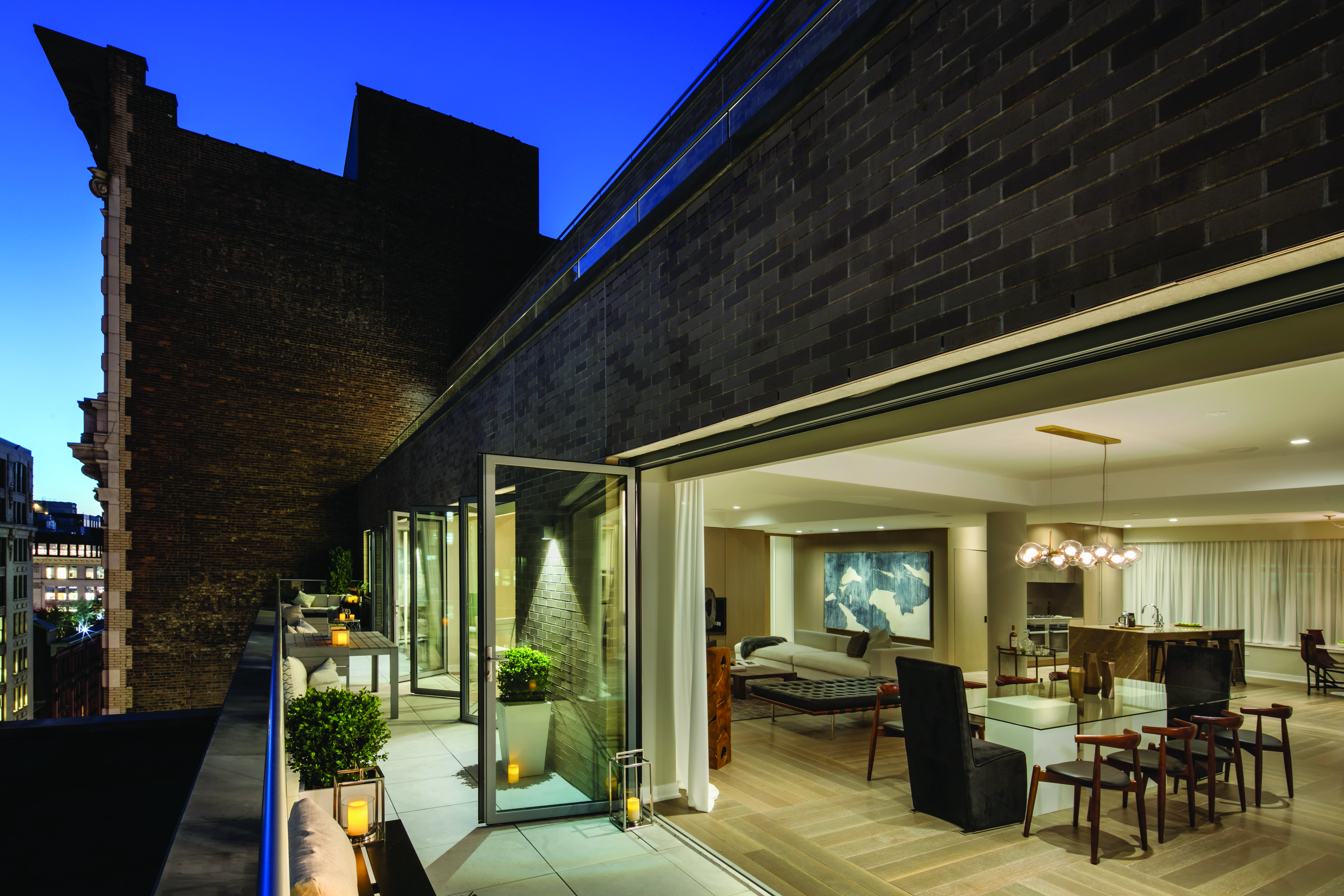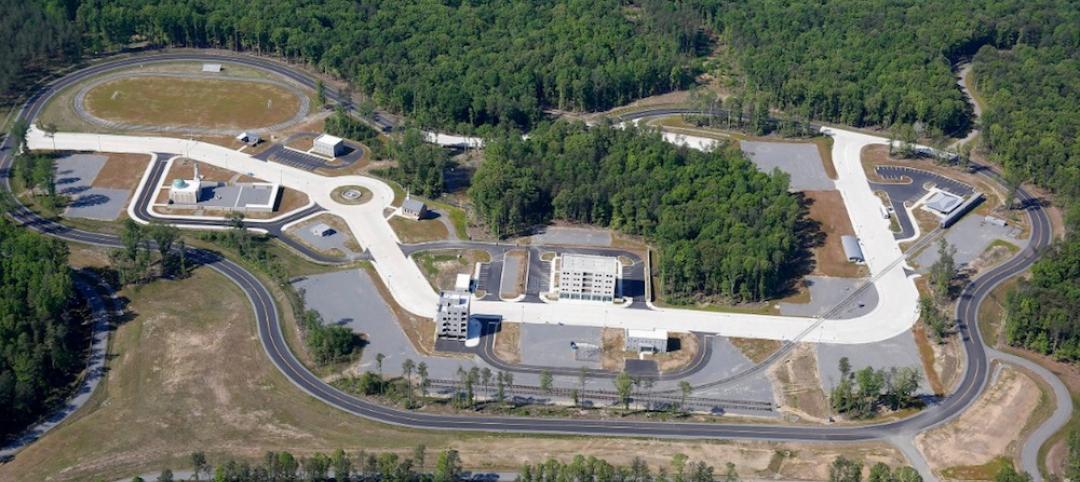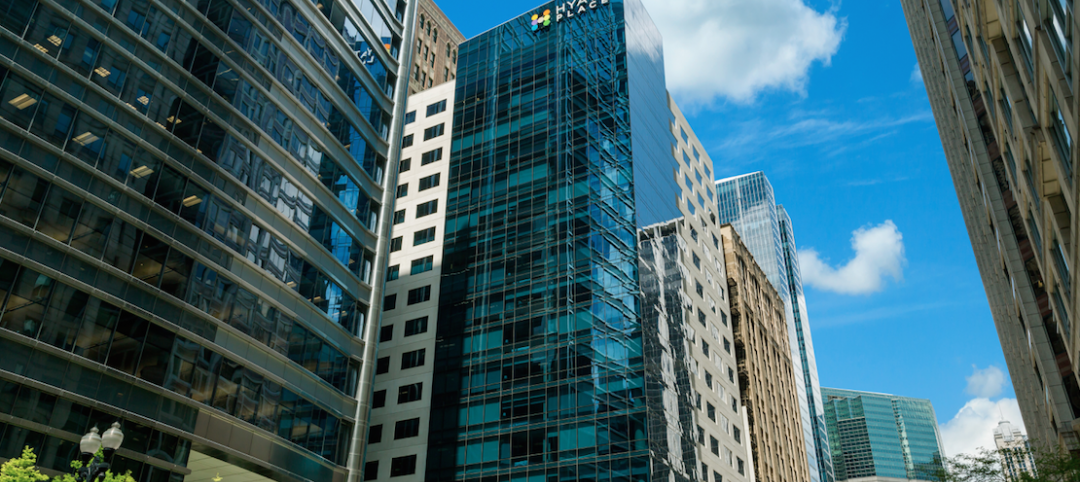Walk into just about any newly built or renovated multifamily complex these days and you’d think you’ve walked into a well-appointed hotel. Pools, spas, workout studios, coffee bars, lounges, study spaces, rooftop terraces, party rooms, chefs kitchens, blazing-fast WiFi—these amenities and more are becoming increasingly commonplace in the amenities “arms race” occurring in the multifamily sector.
As the competition for renters and buyers heats up, especially at the higher end of the market, multifamily developers and owners are investing in high-demand features and specialized spaces that will give them a leg up in their markets. While traditional amenities like pools, lounges, and recreation rooms still rule in the multifamily sector, amenities that support health and wellness are gaining in popularity as more developers realize the marketing potential of “healthy living.”
In April, real estate giant Gale International became the first developer in the world to achieve certification under the International WELL Building Institute’s WELL Multifamily Residential Standard. Gale’s 21W20 13-unit luxury condo development in New York City’s Flatiron District earned a Silver rating based on seven categories of building performance: air, water, light, nourishment, fitness, comfort, and mind.
 Courtesy Kilroy Realty Corp.
Courtesy Kilroy Realty Corp.
The design team, led by Beyer Blinder Belle (design architect) and MR Architecture + Decor (interior design), focused on sound attenuation and providing the cleanest air and water possible for occupants. Advanced measures included MERV 13 air filtration and triple-pane windows and in-floor acoustic mats to mute interior and exterior noise. Each unit features floor-to-ceiling southern exposure and is integrated with home automation technology.
In August, Kilroy Realty Corp.’s Hollywood Proper Residences in Los Angeles became the world’s first rental apartment project to earn WELL Multifamily certification. Designed by Rios Clementi Hale Studios (design architect), House & Robertson Architects (executive architect), and GBD Architects (residential consulting architect), with Webcor Builders as GC, the 200-unit, 22-story luxury tower is a core component of KRC’s Columbia Square mixed-use project. It is loaded with health-focused design features, including an expansive onsite fitness center with ongoing fitness programming (yoga, boxing boot camp, wellness experiences); a green cleaning program; biophilic environment; and enhanced, performance-verified air and water filtration, and acoustic comfort.
WORKOUT STUDIOS, GARDEN WALKS LEAD THE WAY in wellness amenities
A June 2017 survey of 215 multifamily developers, designers/architects, and construction professionals, conducted by BD+C’s sibling publication Multifamily Design + Construction (BDCnetwork.com/MFDC for subscription information), reveals that workout studios, such as Pilates or yoga studios, are becoming a popular amenity in multifamily projects. More than half of respondents (50.6%) said they included some sort of workout studio in a recent apartment or condominium project, and more than one in four (28.2%) said their projects supported these studio spaces with formal yoga, aerobic, or wellness classes. Individual respondents also said they had installed meditation rooms and dance rooms.
Other popular health/wellness amenities cited by survey respondents ranged from garden walks (55.3%) to pools (49.8%) to community garden/urban farms (29.7%). There was a sizable falloff in more active spaces such as sports courts and jogging paths (tied at about 27%), tennis courts (10.3%), climbing or bouldering walls (7.1%), and racquetball or squash courts (3.9%).
Surprisingly, nearly one in five respondents (18.7%) said they provided space for physical therapy, and more than a fifth (21.8%) incorporated a formal spa/health club into the amenities package.
 Health-focused amenities at the Hollywood Proper Residences in Los Angeles include an expansive onsite fitness center with ongoing programming featuring yoga and boxing boot camps. Courtesy Kilroy Realty Corp.
Health-focused amenities at the Hollywood Proper Residences in Los Angeles include an expansive onsite fitness center with ongoing programming featuring yoga and boxing boot camps. Courtesy Kilroy Realty Corp.
“Green” concerns like recycling (47.1%) and sustainable building certification under the U.S. Green Building Council’s LEED rating program or the National Association of Home Builders’ National Green Building Standard also seem to be popular with a core group (39.4%) of multifamily developers and designers. It is also the case that many developers and designers routinely include energy- and water-conserving components, such as Energy Star and WaterSense appliances, without necessarily seeking formal green certification.
Less popular (but worth tracking on your radar): building-wide water purification systems (16.5%), wellness or feng shui gardens (14.7%), and cooking classes or chef demonstrations (14.1%).
Only a handful of respondents (3.5%) said they had pursued wellness certification (such as the WELL standard), but this is likely to increase in coming years due to consumer concerns about indoor air quality and the connection to household-related illnesses like allergies.
Related Stories
| Sep 26, 2016
BD+C's GreenZone structure en route to Greenbuild in Los Angeles
The 2016 Compton YouthBuild Education Center gets set for a ride from Porland, Ore., to Los Angeles, where the 600-sf structure will be on display at Greenbuild 2016 (Oct 5-6).
| Sep 9, 2016
Going to Greenbuild/LA? Be a BD+C 'Special Correspondent'
Building Design+Construction is looking for a few special Greenbuild 2016 attendees to join our team of Special Correspondents who are reporting all the news from Greenbuild-Los Angeles.
Greenbuild Report | Dec 23, 2015
How engineers help developers meet green building objectives
Engineers say AEC teams need to be on the same page to help clients realize goals that often boil down to minimizing construction and operating costs.
Greenbuild Report | Dec 14, 2015
Sensible sustainability: The new standard for hotels
In October 2008, The Proximity, a 147-room hotel in Greensboro, N.C., became the first LEED Platinum–certified hotel in the U.S. Since then, only two other hotels have earned LEED Platinum.
Greenbuild Report | Dec 10, 2015
AASHE’s STARS tool highlights the university sector’s holistic approach to sustainability
Buzzwords like “living lab” and “experiential learning” are indicative of the trend toward more holistic sustainability programs that incorporate all facets of college life.












